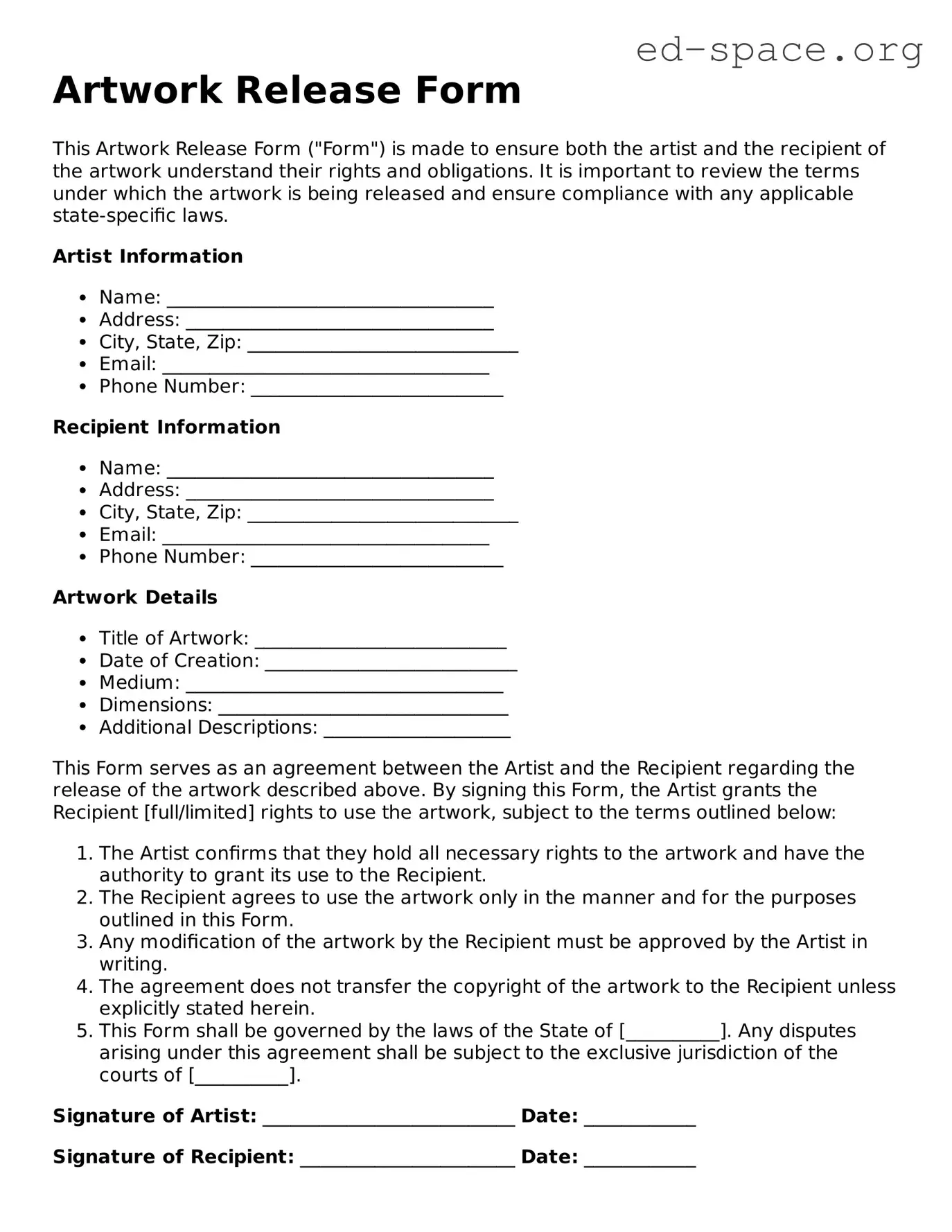What is an Artwork Release Form?
An Artwork Release Form is a legal document between an artist or the owner of an artwork and a third party, granting permission to use the artwork for specific purposes. It outlines the terms under which the artwork can be used, including how, where, and for how long, ensuring the artist's rights are protected while allowing others to utilize the artwork legally.
When do I need an Artwork Release Form?
You'll need an Artwork Release Form whenever you want to use someone else's artwork for any commercial or public project. This could be for anything from including it in a publication, displaying it in a public space, to using it for merchandise or in advertising. The form ensures you have the necessary permissions to use the artwork, preventing potential legal issues down the line.
Who should sign the Artwork Release Form?
Both the artist or the copyright owner of the artwork and the person or entity wishing to use the artwork should sign the Artwork Release Form. This ensures that both parties agree to the terms laid out regarding the usage of the artwork, and provides a written record of the agreement.
What information needs to be included in an Artwork Release Form?
The form should clearly identify the artwork being released, the parties involved, the scope of the release (such as where and how the artwork will be used), any limitations on the use of the artwork, the duration of the agreement, and any financial compensation agreed upon for the use of the artwork. It's also important to include details about rights to edit the artwork or requirements for crediting the artist.
Can the terms of an Artwork Release Form be negotiated?
Yes, the terms of an Artwork Release Form are not set in stone and can be negotiated between the artist and the party wishing to use the artwork. It’s essential for both parties to discuss their needs and expectations before signing the form. This negotiation can include discussions on the scope of the use, compensation, credit, and any other concerned areas.
What happens if you use artwork without a signed Artwork Release Form?
Using artwork without a signed Artwork Release Form can lead to serious legal complications. The artist or copyright owner may pursue legal action for copyright infringement, which can result in costly fines and legal fees. Additionally, the unauthorized use of artwork can damage relationships with artists and other creators, making future collaborations difficult.
